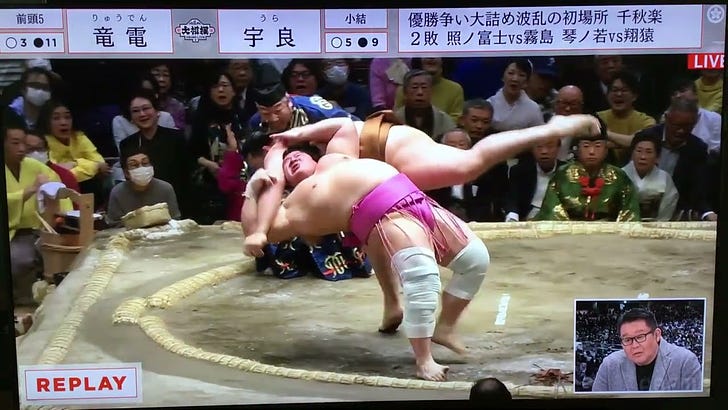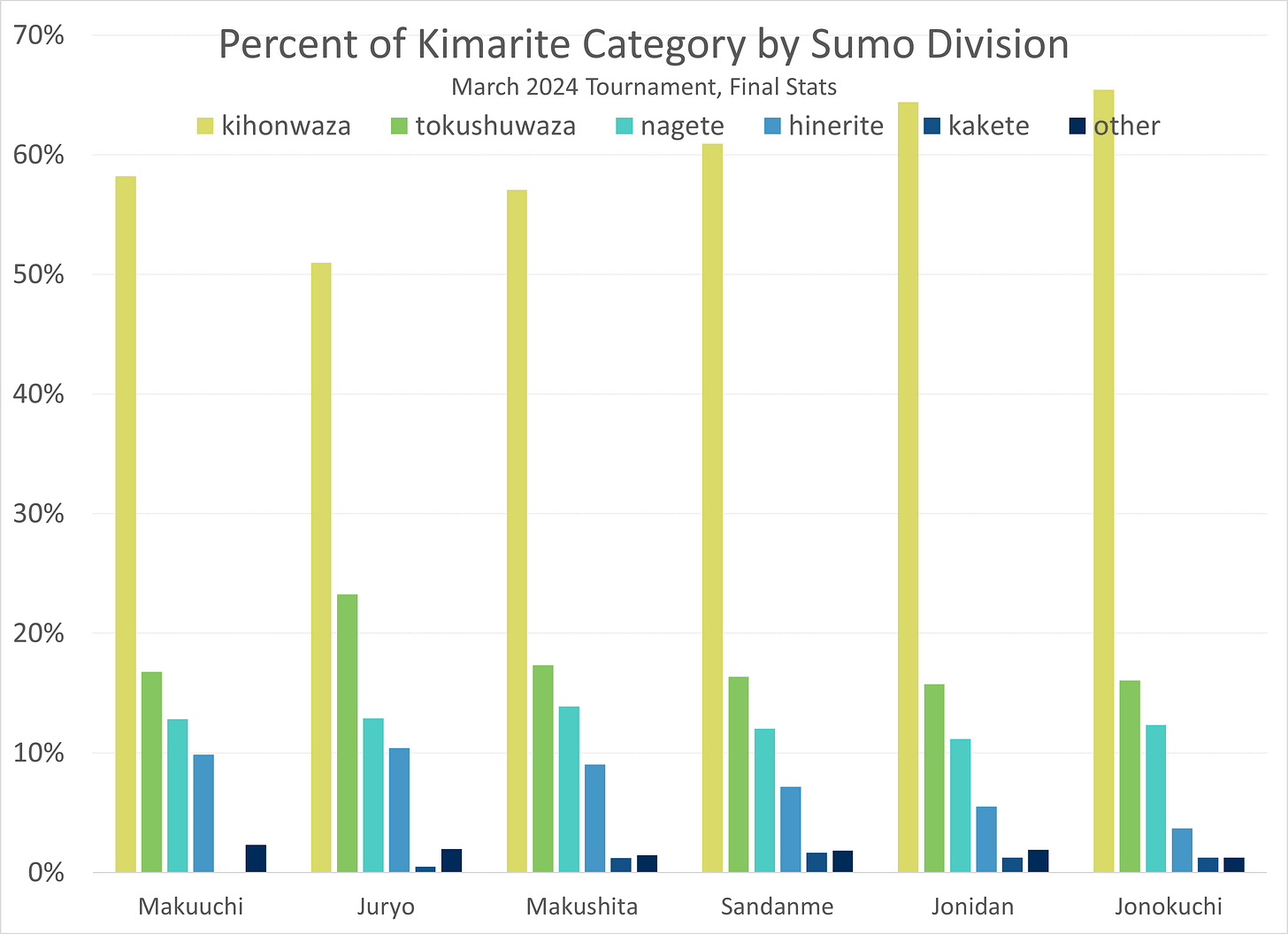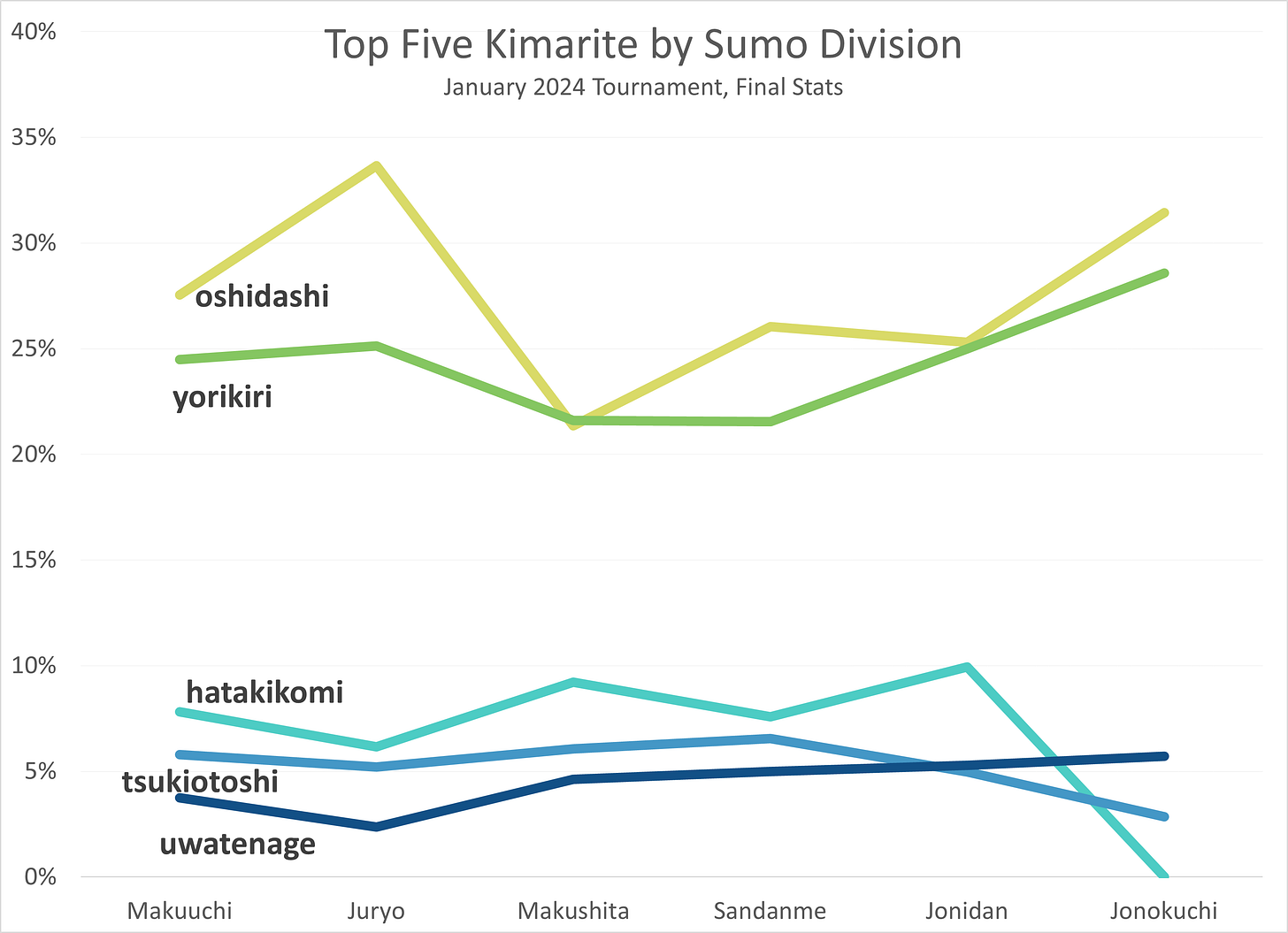Haru Basho 2024 Kimarite: High-Level Distribution
Initial look at the kimarite categories and top kimarite
Now that we’re between tournaments again (oh woe), it’s time to do a look at the stats.
Let’s take a look at how the main kimarite categories fell out for the March tournament. In future posts, I will focus solely on the Makuuchi division, but for this post, I want to grab the overall kimarite.
The data source is the Sumo Reference, which is a helpful database for historical match information.
March 2024 Kimarite Category Distribution by Division
Let’s look at this two ways:
For convenience, this is a description of the categories:
Kihonwaza - these are the basic techniques and tend to be the most common. Yorikiri and oshidashi are in there.
Tokushuwaza - “Special techniques” - gee, that’s helpful. But it includes the very common hatakikomi “slap down” and hikiotoshi “pull down”.
Nagete - these are throws, like sukuinage and uwatenage.
Hinerite - “twist down” techniques, this includes moves like Midorifuji’s favorite: katasukashi
Kakete - these are the leg-trip/-pick techniques.
“Other” is the leftover stuff like fusen, which is when somebody is out due to illness or injury. It also includes disqualifications due to hairpulls or losses due to screw-ups like somebody slipping.
As with the January tournament post I did on its distribution:
Kimarite Distribution for Hatsu 2024!
No, I’m not going to show off the playoff match, but I will show this match between Terunokaiju and Kirishima:
You’ll see that the lowest divisions have the highest percentage of matches won by kihonwaza… and it’s mostly yorikiri and oshidashi.
Alternative graph for kimarite distribution
I don’t like the following format as much, but somebody asked me to try it, and this is what it looks like:
It’s the same information, just with the information organized differently.
I prefer the other approach, but I can see the benefit of this approach as well. You can make different comparisons in this approach.
Top Five Kimarite Overall
For this one, these are the top five kimarite overall, for all divisions.
You may find a comparison to the January 2024 graph interesting:
I do check — these were the same top 5 in both tournaments. Jonokuchi has far fewer matches than the other divisions, and no hatakikomi wins were recorded in January for that division.
Oshidashi and yorikiri are always tops, and they’re part of the kihonwaza category. The other three:
hatakikomi: tokushuwaza (special techniques)
tsukiotoshi: hinerite (twist downs)
uwatenage: nagete (throws)
Hatakikomi is an interesting example in that it’s often the kimarite recorded in a successful henka-related win.
But there are also non-henka hatakikomis. I saw plenty of those - some slap-downs were the other wrestler just becoming unbalanced for other reasons and easier to push down.
I do find the different trends on oshidashi and yorikiri interesting. It’s probably due to the presence (or non-presence) of specific wrestlers and specific match-ups.
Juryo is a little simpler compared to Makuuchi - Juryo has fewer wrestlers, with only 28, compared to the 42 in Makuuchi. Even with drop-outs during the tournament, there are 50% more matches in Makuuchi than Juryo, so it doesn’t take that much to change the stats in Juryo compared to Makuuchi.
In any case, in future posts in looking at March 2024 results, I want to look specifically at Makuuchi first in terms of kimarite distributions of individual rikishi, to see if we’ve got anything interesting going on.






